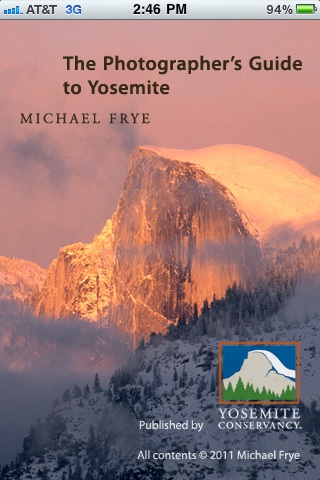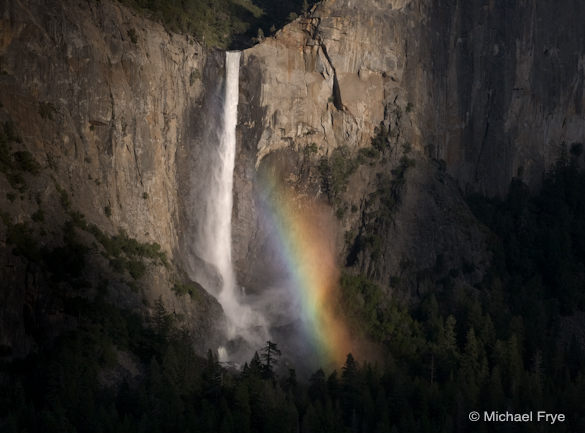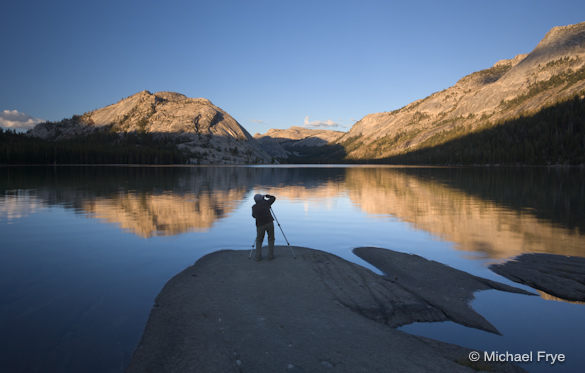by Michael Frye | Sep 13, 2011 | Announcements
 Since it was first published in 2000, my book The Photographer’s Guide to Yosemite has been very popular. Over the years, I’ve heard from so many photographers who love the book and have found it helpful when trying to capture images of Yosemite. Thank you all so much!
Since it was first published in 2000, my book The Photographer’s Guide to Yosemite has been very popular. Over the years, I’ve heard from so many photographers who love the book and have found it helpful when trying to capture images of Yosemite. Thank you all so much!
On Thursday, The Photographer’s Guide to Yosemite will become available as an iPhone app! This app contains all the information in the original book, and much more: three new locations, completely revised and updated information for the entire park, and new tips specifically designed for digital photography. Plus many great features that could only work in an app—like the ability to filter the locations and find only the best ones for a particular month and time.
I’ll give you all the details on Thursday—stay tuned!
by Michael Frye | Sep 7, 2011 | Composition, Digital Darkroom, Photography Tips

My preferred crop for this image of Bridalveil Fall doesn't fit any of the common print sizes.
In the comments for my last critique, Michael Glover asked a question about cropping and aspect ratios. I get this question a lot, as many people feel that they must crop their images to a certain size—4×6, 8×10—for printing. So I thought I would expand on my answer to Michael and address this issue in more depth here.
The problem with cropping to fit a particular aspect ratio for printing is that you can compromise the photograph’s esthetics. The accompanying images of Bridalveil Fall show what I mean. Below you’ll find the uncropped version, with its original 2:3 (or 4×6 or 8×12) aspect ratio, and a version cropped to a 4:5 (or 8×10) ratio.
To me, the uncropped version leaves too much empty space on the right and left sides, while the 4:5 ratio is too square, and a bit static. I prefer the crop at the top of this post, which lies somewhere in between.
(more…)
by Michael Frye | Sep 2, 2011 | Announcements, Workshops

Workshop participant at Tenaya Lake
The Ansel Adams Gallery has released their (nearly) complete workshop schedule for 2012. I’ll be teaching four workshops for them, including Landscapes in the Digital Darkroom: Mastering Lightroom (January); Spring Yosemite Digital Camera Workshop (April); Full Moon Night Photography (July); and The Digital Landscape: Autumn in Yosemite (October).
Lightroom has rapidly become the software tool of choice for many photographers because it’s simple, yet powerful—easy to use, but sophisticated enough to get great results with almost any image. For the first time I’ll be teaching a workshop specifically focused on this tool—Landscapes in the Digital Darkroom: Mastering Lightroom.
(more…)
by Michael Frye | Sep 1, 2011 | Critiques
Photo Critique Series: “Finnich Gorge” by David Dalziel from Michael Frye on Vimeo.
I decided to try something new for this latest critique, and record my thoughts with video screen capture. I hope this will create a more interactive, immersive experience, as if you were watching me do a portfolio review in a workshop. Let me know how you like it!
To see the best detail, be sure to watch the video in HD and click the four arrows in the lower-right corner of the video to expand it. Once expanded, I prefer to turn scaling off (in the upper-right corner).
This week’s photo was made by David Dalziel in Finnich Gorge, just north of David’s home in Glasgow, Scotland. Recently I wrote about the third dimension in photography, and how lens choice can affect our perception of depth and space in a photograph. Then in my last critique I showed an example of how a telephoto lens can compress space, flatten perspective, and create patterns. This time we’ll look at the opposite: a wide-angle composition that creates a sense of depth, even though it’s not a grand, sweeping landscape.
(more…)
 Since it was first published in 2000, my book The Photographer’s Guide to Yosemite has been very popular. Over the years, I’ve heard from so many photographers who love the book and have found it helpful when trying to capture images of Yosemite. Thank you all so much!
Since it was first published in 2000, my book The Photographer’s Guide to Yosemite has been very popular. Over the years, I’ve heard from so many photographers who love the book and have found it helpful when trying to capture images of Yosemite. Thank you all so much!









